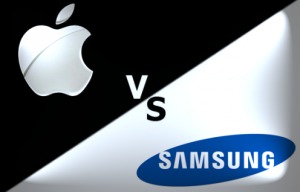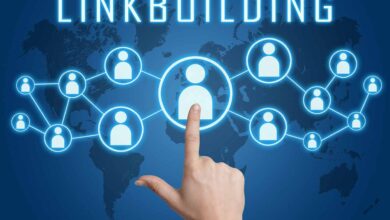Remedies-at-Law for Patent Assertion

We’ve worked with many inventors and businesses over the years who were horrified to discover that their patents had been infringed. Ironically, though, for many of them, it turned out to be a fortuitous and profitable event!
The bad news is that there are no “Patent Police” that you can call when your patent is infringed who will find and arrest the infringers. Patent infringement is a civil matter, so the patent owner (the “assignee” in patent lingo) has to pursue the infringers through civil litigation.
We are often asked by the owner of an infringed patent what he or she or it can expect in compensation for infringement of the patent, and the answer depends on the status of the assignee – NPE (non-practicing entity) or market participant – as the remedies are quite different.
♦ NPE: A non-practicing entity is a patent owner that does not practice the patent – that is, does not make or sell a product based on the infringed patent. This most often includes independent inventors and universities. The NPE who can document and prove infringement is entitled under current U.S. patent law to “reasonable royalties” – what the infringer would have likely paid in royalties had the infringer licensed the patent in the first place instead of infringing it. It seems unfair that Company A blatantly infringes a patent, and the only penalty is that it has to pay the royalty it would have otherwise paid had it simply licensed the patent in the first place, but that’s the law.
The most common chain of events is that the assignee engages a patent litigation law firm or partners with a patent assertion firm, and files a patent infringement lawsuit against the infringer. There are hearings and motions are filed, and there is “discovery” (an exchange of evidence and documents between the plaintiff and the defendant). The patent assignee – the party filing the complaint – is the plaintiff, and the party who is being sued is the defendant.
Both sides are entitled to question the other side’s witnesses in what is known as a “deposition.” At some point – before the actual trial begins – the two sides usually sit down and work out a settlement. Very few patent infringement lawsuits go to trial – the vast majority are settled out-of-court because it is simply too risky to roll the dice and take your chances with a jury. The question every plaintiff asks is “Do I want my fate determined by 12 people, none of whom is smart enough to get out of jury duty?”
In the famous Apple vs. Samsung smartphone patent infringement lawsuit back in 2012, Steve Jobs wanted to go to trial to position Apple as the innovator and Samsung as the intellectual property thief. Jobs’ gamble paid off, and Apple won, but it was a bold move on Apple’s part!
When the assignee and the infringer reach an out-of-court settlement, it often has two parts. First, there is usually a lump sum payment that covers past infringement from when the infringing product first went to market to the present. If the infringer is still selling the infringing product, there is a second part of the settlement in which the infringer takes a license for the patent and pays royalties on sales of the infringing patent going forward for the remaining life of the patent. This is sometimes paid out in quarterly royalty payments, but to close the books on the whole affair, infringers will often agree to a second lump sum settlement that approximates what the royalties would likely be for the life of the patent.
If the two sides cannot reach an agreement, and they do go trail, either side could win or lose. And the whole affair could drag on for years with appeals and other legal maneuvers.
There is often more than one infringer. If Company A’s products are infringing a patent, Company A’s direct competitors’ products are also likely infringing the same patent, so there is Company B and Company C that also have to be sued. From that point forward, the process is pretty much the same with each infringer. However, once two or three infringers agree to out-of-court settlements, the remaining infringers will sometimes just settle up with the plaintiff and save a few hundred thousand in legal fees.
There is one other wrinkle to all of this. If the plaintiff can prove that the infringement was “willful” (the infringer knew about the patent and infringed it anyway), the infringed party is entitled to treble (or “triple”) damages. In many cases, a company comes up with a new idea for a product and goes to market with that product unaware that there is a patent that covers the technology behind the new product. That is unintentional infringement, and the infringer only owes reasonable royalties while the willful infringer owes reasonable royalties times three.
And finally, the plaintiff – in the vast majority of cases – is out the legal fees it took to file and pursue the patent infringement litigation. There are limited “special circumstances” under which the judge in the case will require the defendant to reimburse the plaintiff’s legal fees – or require the plaintiff to reimburse the defendant’s legal fees – but that is a rare outcome.
♦ Market Participant: The rules are very different for the company that owns a patent, produces or sells a product based on that patent, and the patent is infringed. A Market Participant or Practicing Entity is most likely a business that owns and practices a patent. The enterprise manufacturers or sells a product based on the patent, and a competitor is infringing that patent. To clarify an issue about which we are often asked, a Market Participant does NOT have to manufacturer a product to be a Market Participant. It only needs to sell a product based on the patent. Many U.S. companies have their products manufactured overseas – so the company does no manufacturing itself – and it sells those products in the U.S. A company that has a patent-protected product contract manufactured, and only sells it, is most definitely a
Market Participant and entitled to all of the remedies available to a Market Participant.
For the Market Participant, there are three remedies.
Reasonable Royalties: Just like the Non-Practicing Entity, the Practicing Entity – if it can prove infringement – is entitled to what the infringer would have likely paid in royalties had it licensed the patent in the first place. And if the Market Participant can prove willful infringement, it is also entitled to treble damages. Both the NPE and the Market Participant are entitled to reasonable royalties from the infringer, and treble damages if they can prove the infringement was intentional.
Lost Profits: Since the infringed party is selling a product based on its patent, there are profits generated from the patent via the sales of the products based on that patent. When a competitor sells an infringing product, it is essentially stealing sales from the patent owner since had the infringing products not been available, the buyers of those products would have had to buy product from the patent owner. And so, a second remedy available to the Market Participant is the profits it lost on sales that went to the infringing party. By determining what the sales and profits were for the infringer on the infringed products it sold, what those lost profits are can be determined.
Injunctive Relief: The third remedy is not remunerative, but it can be very potent. The court may issue an injunction ordering the infringer to cease sales of the infringing product in the U.S. For an infringer that has a few warehouses full of product that it cannot now sell, and factories set up to produce a product that it cannot sell, an injunction can be devastating! When a Market Participant can secure an injunction from the court ordering the infringer to cease sales, that infringer comes begging to the patent owner to take a license for its patent!
In the famous Apple vs. Samsung patent infringement lawsuit back in 2012, the jury decided in Apple’s favor that Samsung was infringing several Apple patents and Apple was entitled to damages. Apple petitioned the U.S. District Court for the Northern District of California to issue an injunction prohibiting Samsung from importing infringing Galaxy smart phone into the U.S. The judge denied Apple’s request. Apple appealed the ruling, and three years later – that’s how long an appeal can take – the Appellate Court ruled that the judge should have issued the injunction. By then, however, it was too late to benefit Apple since Samsung had substantially changed the design of its phones.
Had the judge properly granted Apple the injunction, and Samsung could NOT sell its smart phones in the U.S., Samsung would have been forced to seek a license from Apple for the infringed patents. Apple could have refused to license its patents – that is most likely what Steve Jobs would have decided – and Samsung would be out tens or million or hundreds of millions in sales revenue. Ouch!
Alec Schibanoff is Vice President of IPOfferings LLC, a leading patent brokerage firm. In addition to patent brokerage, IPOfferings publishes the IP MarketPlace newsletter and offers patent valuation and IP consulting services and has an extensive list of patents for sale at its website.



